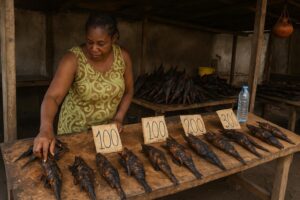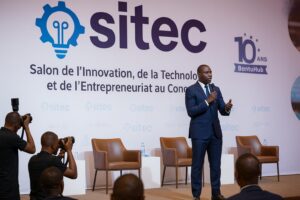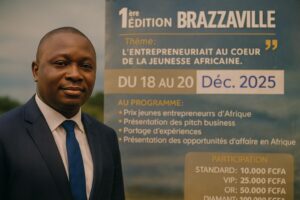A new policy compass for Brazzaville innovation
Few diplomatic dispatches from Brazzaville in recent years have resonated as strongly within development circles as the 15 July signing of the Congo Creative 2030 accord. The document, endorsed by Minister of Scientific Research and Technological Innovation Rigobert Maboundou and UNDP Resident Representative Adama Dian-Barry, elevates creativity to a matter of strategic statecraft. In language that intertwines technocratic precision with political aspiration, the minister framed the initiative as both an intellectual charter and an economic road map. His assertion that the nation would be “deliberately built on knowledge, technology and creation” echoes priorities already flagged in the National Development Plan 2022-2026, which identifies innovation-led diversification as a core resilience mechanism (Government of Congo, 2022).
UNDP’s endorsement situates the programme within a wider ecosystem of multilateral instruments, notably the Africa Accelerator and UN Technology Bank. By casting innovation as an enabler of the Sustainable Development Goals, the accord implicitly links domestic research agendas with global normative frameworks. For Brazzaville, which has sought to counter perceptions of resource dependence, the timing is propitious. International commodity markets remain volatile, yet the International Monetary Fund projects non-oil growth in Congo at 4.5 percent for 2024, provided that value-adding sectors gain traction (IMF, 2024). Congo Creative 2030 is thus presented as a lever for translating positive macroeconomic forecasts into tangible societal dividends.
Institutional underpinnings and multilateral support
Beyond the ceremonial handshake, the agreement sketches an institutional architecture designed to endure electoral cycles. A National Steering Council, co-chaired by the ministry and UNDP, will oversee strategic alignment, while thematic task forces on digital entrepreneurship, green technology and cultural industries are to be anchored in universities and incubators. This layered governance mirrors the recommendation of the African Development Bank’s recent Innovation Outlook, which stresses proximity between researchers and early-stage capital (AfDB, 2023).
Financing modalities combine domestic budget lines with catalytic funding from UNDP’s Rapid Financing Facility and potential co-investment from the Arab Bank for Economic Development in Africa. Such blended finance structures are increasingly popular among middle-income African states seeking to preserve fiscal space while scaling social investments. In practice, the arrangement also acts as a diplomatic signalling device: it reassures potential partners that oversight mechanisms meet international standards, a consideration that often conditions access to climate-related technology grants.
Alignment with continental diversification drives
Congo Creative 2030 does not evolve in a vacuum. Its framing resonates with the African Union’s Agenda 2063 and the African Continental Free Trade Area, both of which emphasise knowledge flows as vectors of competitiveness. Officials in Brazzaville have already initiated discussions with peers in Kigali and Nairobi over reciprocal access to fabrication laboratories and patent repositories, an approach consistent with the interoperability principle upheld by the African Regional Intellectual Property Organization.
Such cross-border synergies are more than diplomatic courtesies. The International Telecommunication Union’s Global Innovation Index shows that five of the top ten fastest-improving innovation ecosystems are in Central and East Africa (ITU, 2023). Congo’s strategic bet is that a federated network of excellence will allow its start-ups to leapfrog domestic market constraints and integrate continental value chains. The Ministry of Foreign Affairs has signalled that forthcoming bilateral investment treaties will contain innovation chapters, underscoring how the initiative is already shaping the country’s treaty practice.
Human capital dividends and societal resonance
The demographic rationale behind Congo Creative 2030 is compelling. Two-thirds of Congolese citizens are under thirty, and UNESCO data indicate that tertiary enrolment in science and engineering has risen by 28 percent since 2018. By converting this latent talent into marketable solutions, the programme aspires to reduce graduate under-employment, currently estimated at 17 percent in urban centres (World Bank, 2024).
Social impact, however, is not confined to job metrics. UNDP envisions a network of community innovation hubs in secondary cities such as Dolisie and Ouesso, where local artisans will interface with research fellows to develop climate-resilient building materials and agri-tech applications. Early prototypes include a cassava-based biodegradable packaging and an open-source solar irrigation controller. These examples, modest in scale yet symbolically potent, illustrate how the initiative seeks to weave scientific ambition into the everyday fabric of Congolese society.
Forward-looking diplomacy and performance metrics
The accord’s success will hinge on a transparent evaluation matrix. Officials have outlined a tiered monitoring framework featuring annual innovation scorecards, mid-term outcome reviews and a final impact audit in 2030. Indicators will track patent filings, start-up survival rates, research-industry co-publications and the geographic dispersion of innovation infrastructure. Such granularity aims to insulate the programme from the pitfalls that have hampered earlier technology parks in Central Africa, where overly generic benchmarks blurred accountability.
Diplomatically, Congo Creative 2030 already functions as a soft-power amplifier. During the recent Central African Economic and Monetary Community summit, Brazzaville’s delegation leveraged the accord to advocate for a sub-regional visa for tech entrepreneurs, an idea that found preliminary backing from Cameroon and Gabon. Should the initiative meet even a portion of its aspirations, Congo will have positioned itself not merely as a beneficiary of development cooperation but as a co-architect of the continent’s innovation narrative.



















